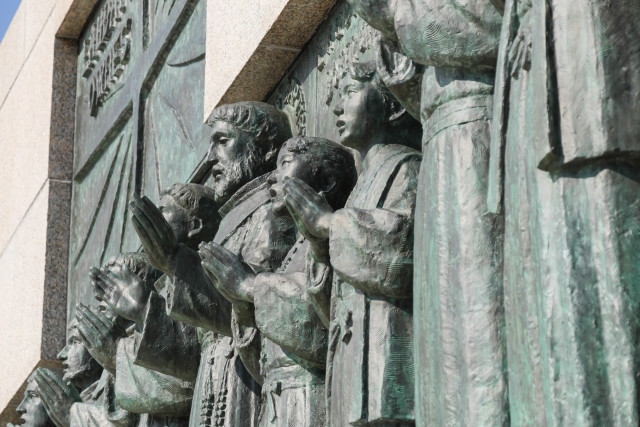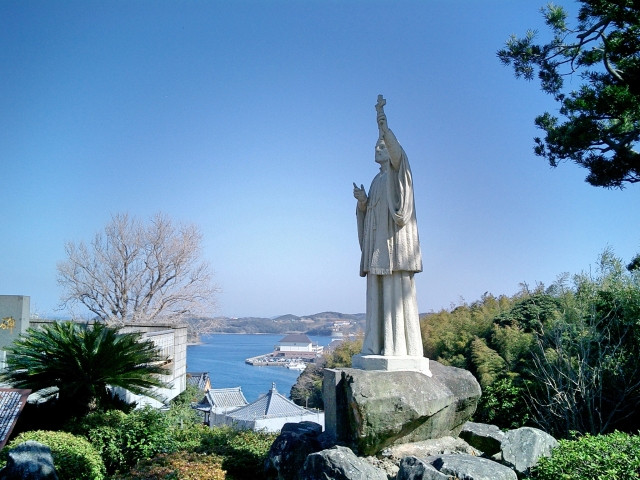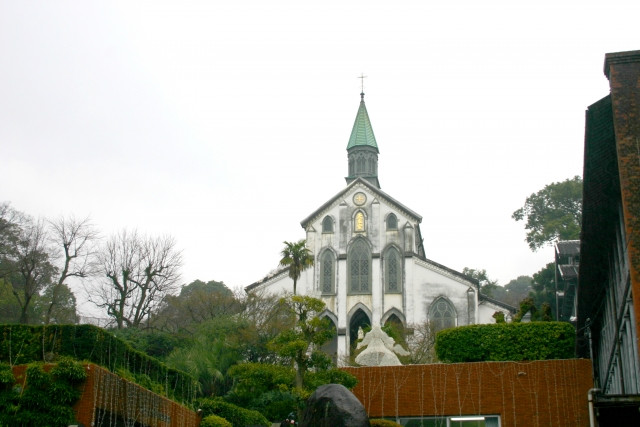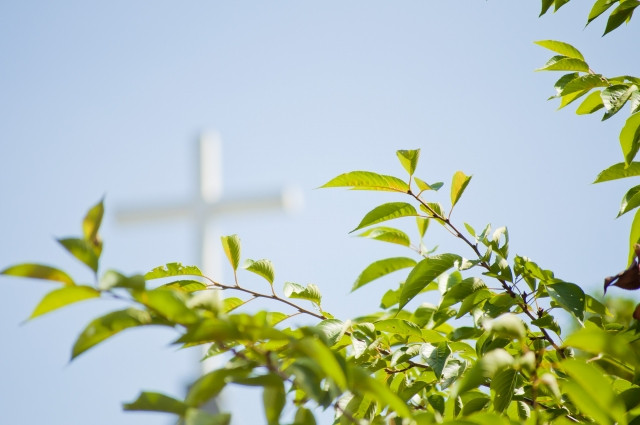Japan welcomes people of different religions, one of which is Christianity. Throughout history, the country has had an interesting relationship with the religion and has been a place for Christian missionary work involving various organizations that continuously engage with Japanese society in different ways - a calling and opportunity for some.
Table of Contents
- Putting into perspective
- Continuous missionary works in modern Japan
- Prospects of missionary works
- Summary
 Are you having any issues with job-hunting in Japan?
Are you having any issues with job-hunting in Japan?
Putting Christianity in Japan in perspective
One of the things that propels the enigmatic character of Japan has something to do with religion. While 70.4% of the entire population, that is 127.1 million, is composed of Shintoists, 69.8% of the total population adheres to Buddhist teachings and practices, according to data from 2017. This is because most Japanese practice both religions together. On the other hand, Christians make up a mere 1.9 million adherents or 1.5% of the population, while other beliefs make up 6.9% or 8.9 million people.
So why is the number of Christians so low comparatively? Christian missionaries came quite early to Japan and at about the same time they arrived in other countries in Asia and South America. However, the biggest difference was the nearly 250 years of “Sakoku”, a period in Japan’s history when it isolated itself from western trade and any form of outside influence.
※ Central Intelligence Agency, "The World Factbook"
History of Christianity in Japan

The Christian religion came first to Japan during 1549 when the Jesuit founder, Francis Xavier, arrived and began his missionary work in Kagoshima. The introduction of the foreign religion, as was the case with Buddhism much earlier, on Japanese soil occurred during the turbulent time of the Warring States Period from 1467 to 1568. During that time, under the protection of some daimyos, or regional lords, who had become disciples, missionaries freely spread their teachings and practices.
But in 1587, a formidable warlord in the person of Toyotomi Hideyoshi made a strong stand against the Christian faith and issued a prohibition, receiving great support from the majority of the people and later on led to an official sanction through an edict issued in 1612 during the Edo Shogunate. Christians were forced to go underground and hide their faith in fear for their lives, known as “Hidden Christians”. After the 250-year “Sakoku” interim transpired, however, Christians were allowed once more to continue with its missionary work beginning in 1853 when Commodore Matthew Perry, who led a small US naval squadron, arrived in Tokyo and demanded trade relations with Japan.
Christianity in Post-isolationist Japan

Aside from their essential duty of teaching their religion and their ritual practices, the missionaries became instrumental in putting up schools. Eventually, the spread of western ideas and philosophy, mathematics, and the various fields of science opened up a vast new horizon for the Asian nation that would become a strong economic leader in the future.
From the initial groundwork established by the Jesuits in the early 16th century to the ensuing closure of Japan to the world up to the reopening of the country to foreign trade and influence, Christianity had not ceased to make its vital impact on people’s lives, especially in terms of education.
The struggling religion was totally revolutionary in its approach to spiritual or moral issues in its teachings as compared to the ones Japan was used to. However, it coming hand in hand with western ideas of social environment, history, hidden laws and principles that govern the physical world as applied in mathematics, arts, health and medicine, science and technological advancement was what drew curiosity and more acceptance. Even early Japanese leaders recognized the positive aspects of western ideas and merged them with their own traditional wisdom and heritage.
Writer's Pick
Continuous missionary works in modern Japa
The Catholics worked as the first missionaries in Japan in the 16th century, followed by the Protestants after Commodore Perry’s arrival in 1853. Since then, various denominations and missions have opened up their missionary outreach programs in Japan all over the archipelago. The presence of many old and often-visited historic churches and sites, such as Oura Cathedral in Nagasaki and Sakitsu Church in Kumamoto related to that noble work in many parts of the country provide the tourists and students of history ample evidence of Christianity’s colorful story. They include Catholic, Protestant, Orthodox and even unorganized Christian churches or fellowships.

Many of the new crop of missionaries working in Japan come from orthodox churches in the west as well as in Asia that engage in teaching the Gospel, doing charitable and relief work, such as disaster-alleviation assistance during and after earthquakes, such as the recent Great Tohoku earthquake and tsunami disaster, and other people-oriented social and cultural activities.
There are many churches that also run formal schools, such as the Jesuit-run Sophia University and the Protestant-run Tokyo Christian University. Most individual missionaries and church groups offer non-formal educational programs to the community in the form of weekly or one-day workshops or seminars centered on doctrinal matters, practical skills-development courses like English classes, livelihood training, social outreach projects and music education.
Prospects of missionary works
If one wishes to work as a missionary in Japan, acquiring an appropriate visa must meet certain qualifications and experience. Primarily, the whole procedure of visa application is also similar to other working visas. An applicant should secure a Certificate of Eligibility and Status of Residence upon entry in Japan.
However, the prerequisite to the whole procedure, or the point of departure from other working visas would be the nature of application. The visa issued for missionary workers in Japan should be permitted by a foreign religious organization. This means that the foreign religious organization is in charge of providing supporting documents to justify that the missionary work falls under the category ‘Religious Activities’.
※ Ministry of Foreign Affairs of Japan, "Working visa" ※ Embassy of Japan in the United States of America, "Work (Religious Activities)"
Although many schools in Japan have religious affiliations, having a missionary visa does not necessarily mean working or teaching courses or subjects in those colleges or universities.
Missionary work may, in fact, involve young missionary workers seeking apprenticeship or hands-on missionary work as part of graduating from an evangelism seminary for short periods of one to two years. Others may enter as part of a group of Christians engaged in organizing communities providing relief assistance, medical help or language-teaching training. It is important to note that working as a missionary in Japan requires a certification of affiliation with a duly-recognized organization.
Summary

Many people derive a deep sense of fulfillment or gratification in expressing their religious beliefs through reaching out to others in far places and getting to know the history and culture of the people and sharing their own sense of joy of being part of a global family through trying to explain the reasons why we all undergo the same trials and hardships and that there is great hope in life and even beyond this life.
Although Japan apparently already possesses more than its share of the material bounty as well as stability as a nation in comparison to most other countries, Christians still find it challenging to meet the obstacles that has made the country a quite enigmatic and impenetrable fortress that has resisted totally embracing the message of Christ since the 16th century, as many other nations have since that time. The challenge remains and Japan opens its doors for those who wish to take it.

































